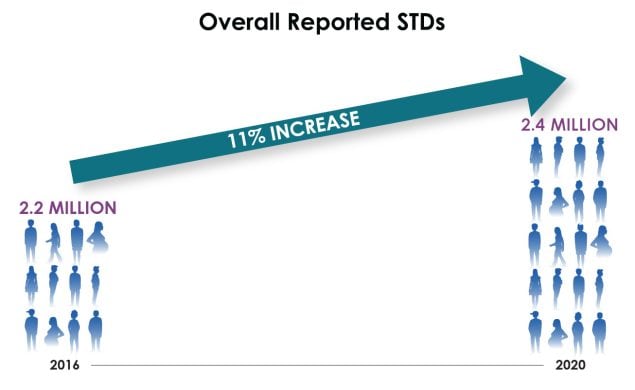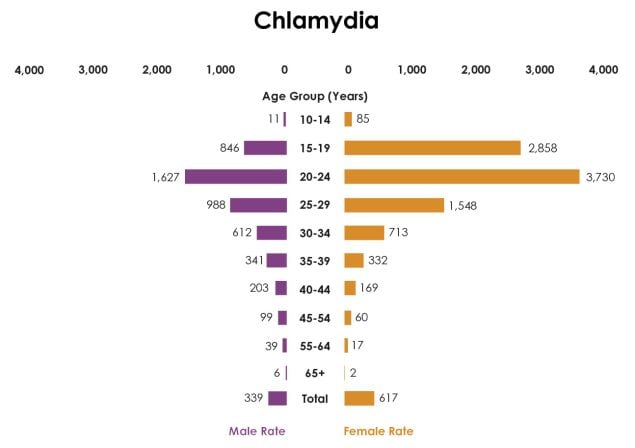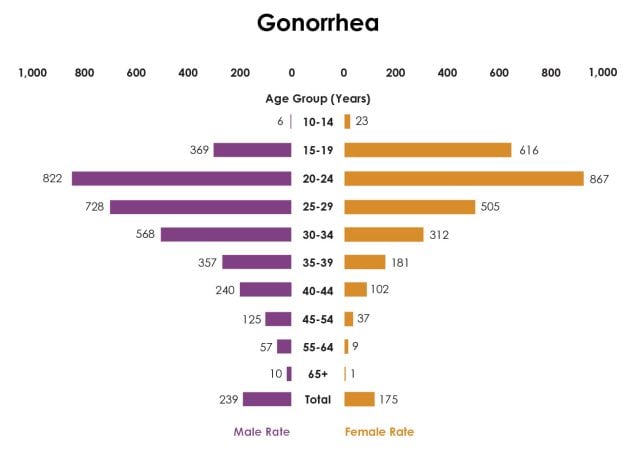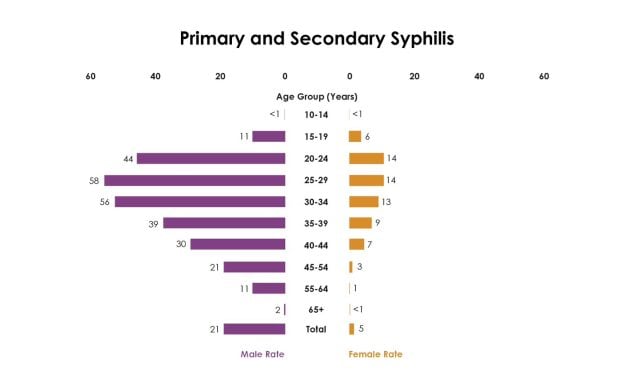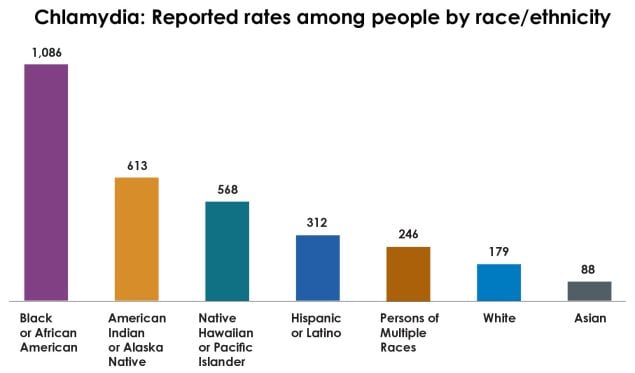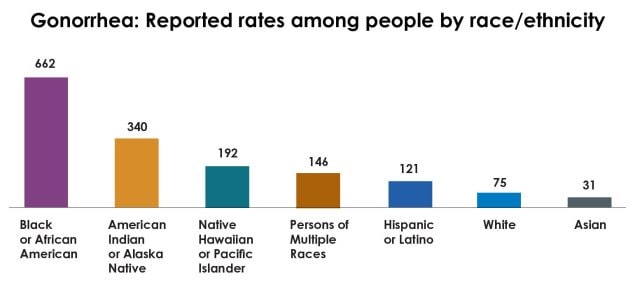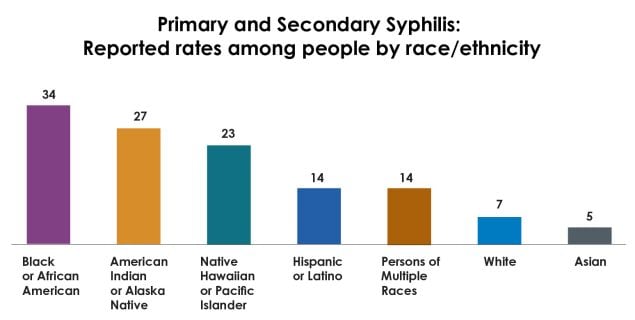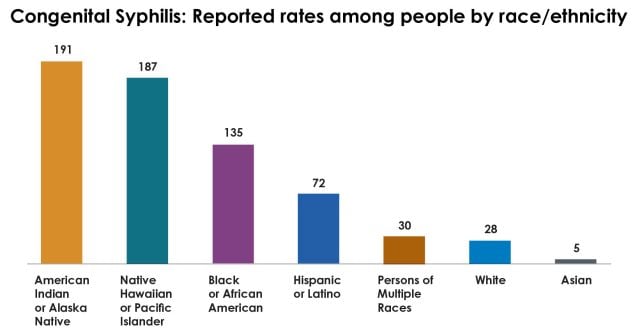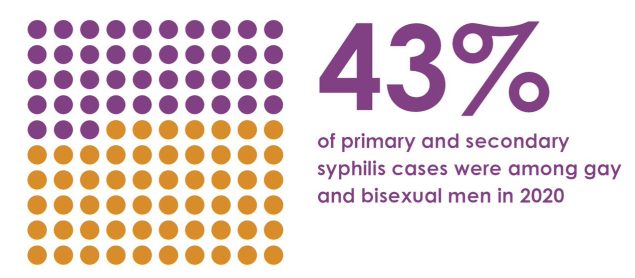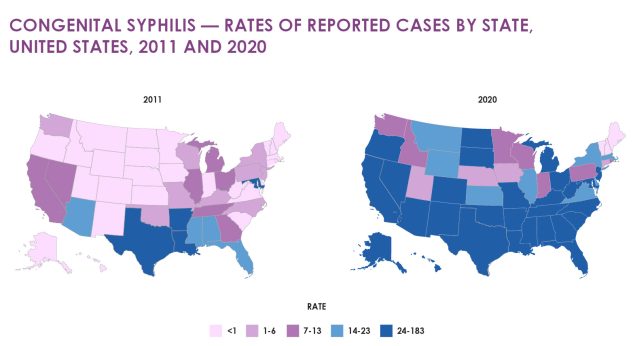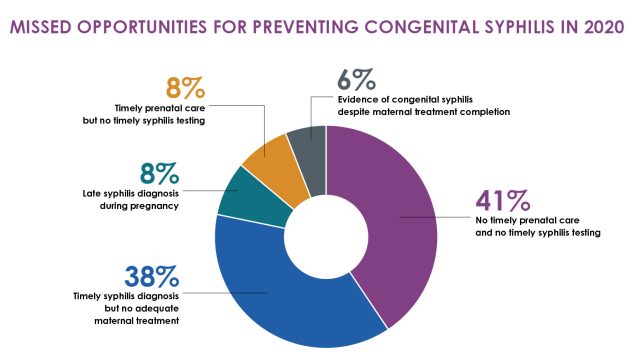Reported STDs in the United States, 2020
Sexually transmitted diseases (STDs) impact the health of millions in the United States each year. The overall number of reported STDs has been on the rise since 2014 and shows no sign of slowing, with infections disproportionately affecting young people under the age of 25, racial and ethnic minority groups, and gay or bisexual men.
STDs can have serious health consequences. People with STDs do not always experience symptoms, but if left untreated, some can increase the chances for HIV infection, or can cause chronic pelvic pain, pelvic inflammatory disease, infertility, severe pregnancy and newborn complications, and infant death.
Record-high STDs threaten millions of Americans. From 2016 to 2020: Overall reported STDs have increased 11%
- Chlamydia has decreased 1.2%
- Gonorrhea has increased 45%
- Total syphilis has increased 52%
- Congenital syphilis (syphilis among newborns) has increased 235%
The terms are often used interchangeably. Sexually transmitted infection is most accurate when referring to pathogens that can be acquired and transmitted through sexual activity – even those that may not cause disease in the individual. In some cases, the term “STD” may be more familiar to more people.
Four STDs—chlamydia, gonorrhea, syphilis, and chancroid—are “nationally notifiable conditions.” STD control programs in state, local, and territorial health departments collect case report data for these conditions and voluntarily provide that data to CDC through the National Notifiable Diseases Surveillance System (NNDSS).
HIV, which is sexually transmitted, is also a nationally notifiable condition. For more information about the U.S. HIV epidemic, see The State of the HIV Epidemic in the U.S.
Maintaining and strengthening core prevention infrastructure is essential to mounting an effective national response to STDs, but LIMITED RESOURCES make it challenging to quickly identify and treat them.
While the COVID-19 pandemic strained an already CRUMBLING PUBLIC HEALTH INFRASTRUCTURE, reductions in STD screening, treatment, prevention, and partner services contributed to STD increases for many years even before the pandemic.
Longstanding SOCIAL AND ECONOMIC FACTORS—such as poverty and health insurance status—create barriers, increase experiences with health risks, and often result in worse health outcomes for some people.
STDs are increasing across many groups, but some racial and ethnic minority groups, gay and bisexual men, and adolescents and adults under 25 years of age continue to experience higher rates of STDs — illustrating a failure to provide access to quality sexual healthcare to everyone who needs it.
Young people
- In 2020, over half (53%) of reported cases of chlamydia, gonorrhea, and primary and secondary syphilis were among young people (ages 15–24)
Rates per 100,000 of Reported Cases by Age Group and Sex in the U.S., 2020
People from Racial and Ethnic Minority Groups
- Most racial and ethnic minority groups experience disproportionate rates of STDs
Rates per 100,000 of Reported Cases by Race/Hispanic Ethnicity in the U.S., 2020
Gay and Bisexual Men
- Gay and Bisexual men also experienced disproportionate rates of some STDs in 2020
Every case of syphilis among newborns (congenital syphilis) is one too many when testing and treatment can save lives. Congenital syphilis, a disease that was nearly eliminated in the U.S., surged to a more than 25-year high in 2020, with cases reported in nearly every state. In 2020:
- Congenital syphilis cases were up 235% from 2016.
- The most common missed opportunities for preventing congenital syphilis remained no timely prenatal care and syphilis testing; and not having adequate maternal treatment despite receiving a syphilis diagnosis.
Local clinics and communities are uniquely situated to respond to evolving STD prevention and control needs. These groups can play a critical role in promoting STD prevention at the local level and empower individuals to prioritize their sexual health.
Industry and the private sector have a role and responsibility to develop new STD testing, treatment, and vaccine innovations that are desperately needed.
Healthcare providers can play a pivotal role in reducing stigma by integrating STD prevention and sexual health into their routine practice and creating a welcoming environment for all people.
The public health sector must prioritize on-the-ground support for STD prevention and surveillance programs at the state and local levels (e.g., disease investigation, contact tracing, training, community engagements, and partnerships) and encourage innovative solutions to improve accessibility and affordability of STD services.
